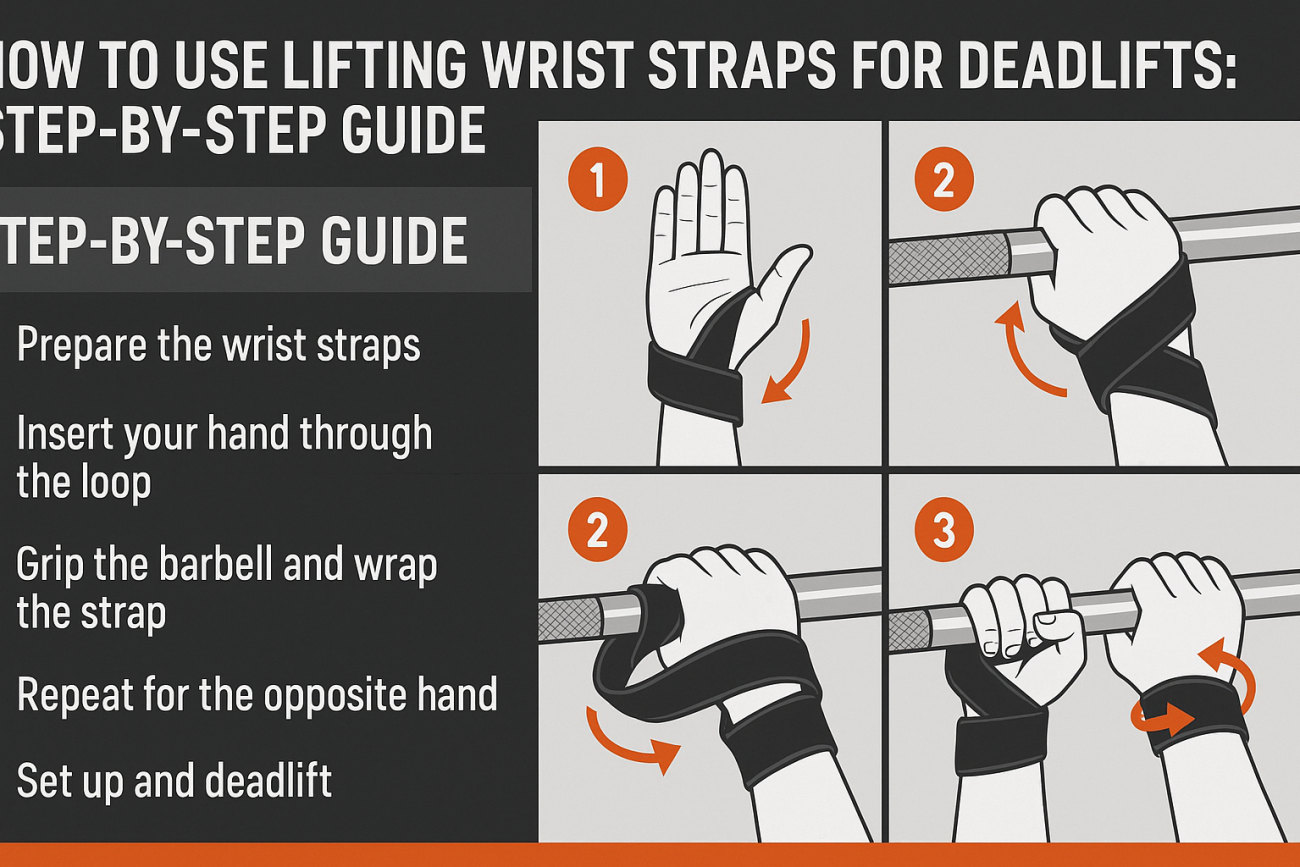If you’re passionate about strength training, deadlifts are probably already a key part of your routine. But as the weight increases, grip strength can quickly become a limiting factor. This is where lifting wrist straps come in—a powerful tool designed to help lifters maximize their deadlift performance. In this comprehensive guide, we’ll cover everything you need to know about using lifting wrist straps for deadlifts, including their benefits, proper usage, and safety considerations.
What Are Lifting Wrist Straps?
Lifting wrist straps are simple yet effective gym accessories made from durable materials such as cotton, nylon, or leather. They wrap around your wrists and the barbell, providing a secure connection and reducing the reliance on grip strength. By allowing you to focus more on your form and lifting technique, wrist straps can help you lift heavier weights for more reps.
- Types of Wrist Straps:
- Loop Straps: Traditional and versatile, featuring a closed loop that you thread your hand through.
- Figure-8 Straps: Shaped like the number 8, providing a very secure grip, especially for heavy deadlifts.
- Lasso Straps: Have an adjustable loop, offering a customized fit around your wrist.
Benefits of Using Wrist Straps for Deadlifts
- Overcome Grip Fatigue: Reduce grip limitations so you can focus on your posterior chain muscles.
- Lift Heavier Weights: Increase your deadlift max by securing your grip on the barbell.
- Protect Hands and Skin: Prevent calluses and blisters from high-volume or heavy lifting.
- Improve Training Volume: Perform more reps and sets without grip giving out before your muscles fatigue.
When Should You Use Wrist Straps for Deadlifts?
Wrist straps are best used during heavy or high-repetition deadlift sets where grip fatigue becomes a limiting factor. However, it’s essential not to rely on them for every set, as developing natural grip strength is vital for overall lifting performance. Consider using straps when:
- Attempting personal records (PRs)
- Performing heavy deadlifts at low reps
- Executing accessory work like rack pulls or Romanian deadlifts
- Rehabilitating from hand injuries or skin tears
Step-by-Step Guide: How to Use Lifting Wrist Straps for Deadlifts
1. Prepare the Wrist Straps
Start by identifying the right and left straps. Many straps are identical, but some are designed for specific hands. Hold the strap so that the loop is on top and the tail (the longer end) is facing down towards your fingers.
2. Insert Your Hand Through the Loop
Slide your hand through the loop, ensuring that the strap lies flat across the back of your wrist. The tail should be extended along your palm. Tighten the loop so the strap fits snugly but isn’t cutting off circulation.
3. Grip the Barbell and Wrap the Strap
- Place your hand on the barbell as you normally would for a deadlift.
- With your other hand, take the tail of the strap and loop it under the bar, then over, wrapping it around the barbell once or twice.
- Twist your hand slightly to tighten the strap, ensuring it is secure.
4. Repeat for the Opposite Hand
Repeat the process with your other hand. Both straps should now be wrapped securely around the barbell, creating a firm connection between your wrists and the bar.
5. Set Up and Deadlift
Before lifting, double-check that both straps are secure and evenly wrapped. Take your regular deadlift stance, brace your core, and initiate the lift. The straps should help you maintain a solid grip throughout the movement.
Visual Guide: Step-by-Step Wrapping Process
- Thread hand through strap loop
- Grip barbell with palm over the strap
- Wrap strap under and around the barbell
- Tighten the strap by rotating your grip
- Repeat for opposite hand
Common Mistakes When Using Wrist Straps
- Straps Too Loose: If the strap isn’t tight enough, it can slip off mid-lift.
- Relying on Straps for All Sets: Overuse can hinder grip development. Use them strategically.
- Improper Wrapping: Failing to wrap the strap tightly or evenly can lead to an unstable grip.
- Neglecting Safety: Wearing straps incorrectly increases risk of injury, especially during heavy lifts.
Safety Tips for Using Wrist Straps on Deadlifts
- Practice First: Get comfortable using straps with moderate weight before attempting maximum lifts.
- Monitor Wrist Health: Avoid excessive compression or twisting of the wrist when using straps.
- Release Quickly: Be prepared to release the barbell safely in case of emergency—never tie straps too tightly.
- Alternate Grip Use: Occasionally train without straps to maintain grip and forearm strength.
Should You Use Wrist Straps for Every Deadlift Session?
While wrist straps are invaluable for heavy lifts and volume work, they shouldn’t replace grip training entirely. Most experts recommend using them during your heaviest sets or when grip is the only limiting factor. For warm-ups and lighter sets, train without straps to ensure your grip develops along with your muscle strength.
If you’re a competitive powerlifter, remember that wrist straps are not allowed in most deadlift competitions, so practice plenty of strapless lifting as well.
Choosing the Best Wrist Straps for Deadlifts
When selecting wrist straps, consider the following factors:
- Material: Cotton for comfort, nylon for durability, leather for maximum support.
- Length: Longer straps allow more wraps around the bar, increasing security.
- Width: Wider straps distribute pressure but may feel bulkier.
- Padding: Some straps include wrist padding for added comfort during heavy lifts.
Conclusion: Lift Stronger, Lift Smarter
Lifting wrist straps can significantly enhance your deadlift training by overcoming grip limitations and allowing you to maximize muscle engagement. As with any gym accessory, use them wisely—focus on proper technique, alternate between strap and strapless lifting, and always prioritize safety. With the right approach, wrist straps are an excellent addition to your lifting toolkit and can help you break through plateaus, achieve new personal bests, and build a stronger, more resilient body.
